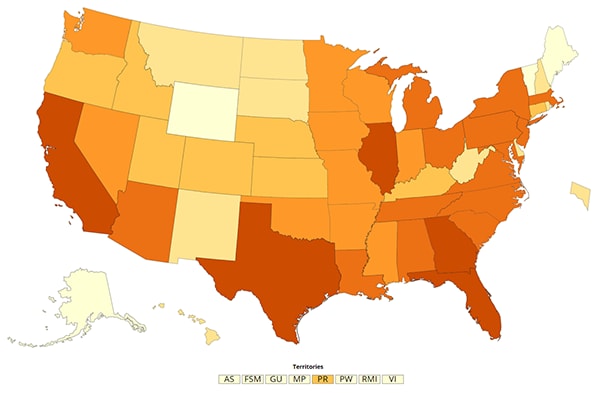Received this email from a friend? Sign up now |
|---|
October 26, 2020 This message includes updates on the COVID-19 response from CDC. The COVID-19 Outbreak is a rapidly evolving situation and information will be updated as it becomes available. |
|---|
Toolkit for Youth SportsCDC’s Toolkit for Youth Sports includes resources and tools to help youth sports administrators, coaches, and parents protect their teams and players and communicate with their communities. The Toolkit includes guidance and planning documents, web resources, FAQs, posters, fact sheets, sample social media posts and related videos. |
|---|
How COVID-19 SpreadsCOVID-19 is thought to spread mainly through close contact from person to person, usually between people who are within about 6 feet of each other. People who are infected but don’t show symptoms also can spread the virus to others. Some infections can be spread by exposure to the virus in small droplets and particles that can linger in the air from minutes to hours. Under certain conditions, people with COVID-19 seem to have infected others who were more than 6 feet away. These transmissions occurred within enclosed spaces that had inadequate ventilation, and sometimes the infected person was breathing heavily while singing or exercising, for example. But available data indicate that it is much more common for the virus that causes COVID-19 to spread through close contact with a person who has been infected. |
|---|
HalloweenMany traditional Halloween activities can be high-risk for spreading viruses. There are several safer, alternative ways to participate in Halloween. Carving or decorating pumpkins with members of your household, carving or decorating pumpkins outside, at a safe distance, with neighbors or friends, and having a virtual Halloween costume contest are all lower risk Halloween-related activities. If you may have COVID-19 or you may have been exposed to someone with COVID-19, you should not participate in in-person Halloween festivities and should not give out candy to trick-or-treaters. |
|---|
Similarities and Differences between Flu and COVID-19Influenza (Flu) and COVID-19 are both contagious respiratory illnesses, but they are caused by different viruses. COVID-19 is caused by infection with a new coronavirus, and flu is caused by infection with influenza viruses. In addition, COVID-19 seems to spread more easily than flu and causes more serious illnesses in some people. It also can take longer before people show symptoms, and people can be contagious for a longer time. Another important difference is that while is currently no vaccine to prevent COVID-19, there is a vaccine to protect against flu—and this year, getting your flu shot is more important than ever. The best way to prevent infection is to avoid being exposed to the virus. |
|---|
Toolkit for Businesses & WorkplacesCDC’s Toolkit for Businesses and Workplaces offers guidance and tools to help business owners protect their customers and employees. General business FAQs are included as a resource, as well as links to web resources and planning documents. |
|---|
Coronavirus Disease 2019 (COVID-19) in the U.S. |
|---|
As of October 26, 2020 In the United States, there have been 8,617,022 confirmed cases of COVID-19 detected through U.S. public health surveillance systems in 50 states and the District of Columbia, Puerto Rico, Guam, the Northern Marianas Islands, and U.S. Virgin Islands. CDC provides updated U.S. case information online daily. |
|---|
|
|---|

